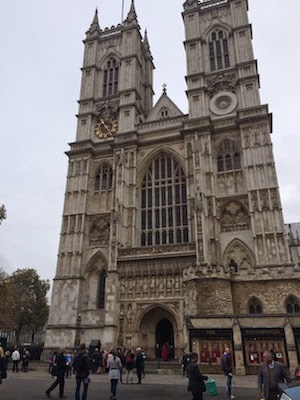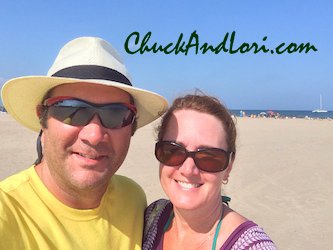 |
| Westminster Abbey |
If you weren’t aware, many of the more popular Church of England cathedrals charge an entrance fee. We have no problem with the practice: these magnificent buildings, after all, require huge sums to maintain. Some of those funds come from a heritage fund from the British government, and a much smaller portion comes from the parishioners and churchgoers. The balance (hopefully) comes from visitors fees and photography permits.
The curious thing is that the churches “close” to visitors on Sundays. We had decided that we’d attend services at Westminster Abbey the Sunday we were in London and watched as a number of people ahead of us in line to enter were turned away, disappointed that the iconic church was unavailable for visitors. Once we reached the head of the line, we simply announced, “We’re here for choral matins.” The response was, “Welcome, come right in.”
It’s amazing the welcome you get when you visit one of England’s grand cathedrals for their intended purpose, and if you get a chance to attend choral (sung) matins or evensong, we highly recommend it. It’s somewhat true that you are discouraged from “visiting” the church before and after services: you are there, after all, for prayer services, not for touring. This suited us fine, as we have visited Westminster Abbey before. Our entrance fee was instead placed in the collection plate as we were treated to heavenly voices and pipe organ music.
Our regular readers know that we are on a long term mission of visiting each of England’s Anglican cathedrals. Westminster Abbey, the site of coronations and some royal weddings, is probably the best known of all English churches, but it’s technically not a cathedral. It is instead a “Royal Peculiar”, the home church of the Church of England, in much the same way that Saint Peter’s in Rome is the home of the Holy See of the Roman Catholic Church, while Saint John Lateran’s Basilica across town is the cathedral for the Bishop of Rome, i.e. the pope’s official cathedral. Saint Paul’s is London’s cathedral, which we’ve seen before but decided to skip this time because, as you’ll see in our coming blogs, we crammed a lot of other sightseeing into our five days in London.
A Saxon abbey has stood on this end of London since the mid 900’s. King Edward the Confessor ordered the rebuilding of the abbey, with construction from 1042 to 1090. He intended to be buried there, and once he fell sick the church had to be consecrated while still under construction in 1065. The consecration was just in time: he died a few days later. King Henry III ordered the construction of most of what we see today in 1245, and he’s buried here also. In addition to Edward the Confessor and Henry III, other monarchs interred at Westminster Abbey include Henry VII (father of Henry VIII), Elizabeth I, Mary I, Mary Queen of Scots, and Anne.
Other noteworthy people buried at Westminster Abbey include Neville Chamberlain (the prime minister), Charles Darwin, Sir Isaac Newton, and David Livingstone (of “Dr. Livingstone, I presume?” fame). The south transept has earned the special designation of “poet’s corner”, as the burials here include Robert Browning, Geoffrey Chaucer, Charles Dickens, Rudyard Kipling, Laurence Olivier, and Alfred Lord Tennyson.
If the point of your visit is to see as many of those famous markers as you can, it’s best to visit on any day other than Sunday. While we didn’t really feel rushed to leave after attending matins, wandering around the church after services on Sunday is indeed discouraged. But regardless of when you go, as you go from grave to grave, don’t forget to look up and marvel at the abbey itself.
 |
| Churchgoers Leaving via the Cloisters |






